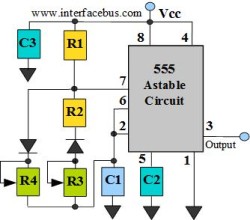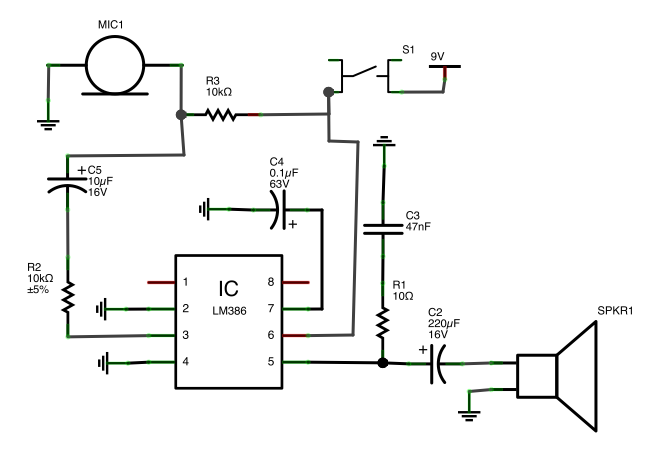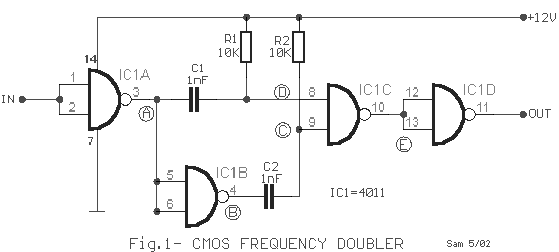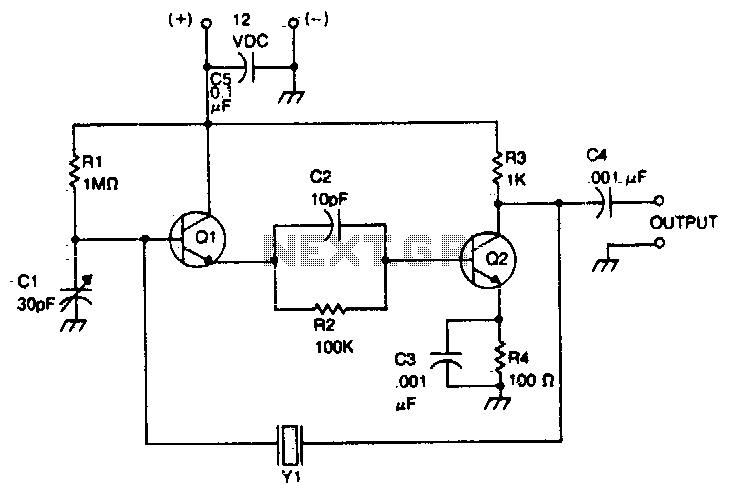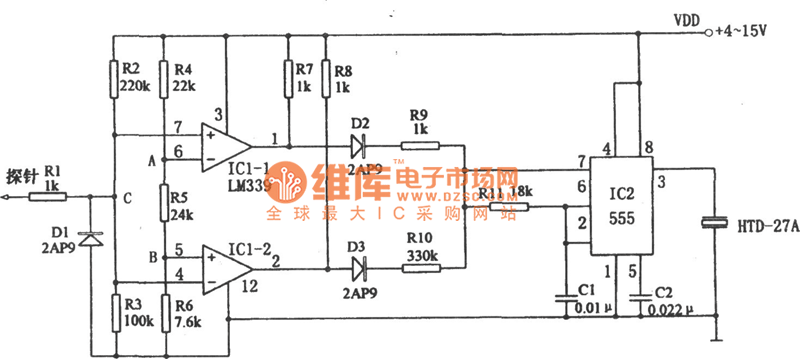
Frequency crystal oscillator circuit diagram of 10kHz-150kHz
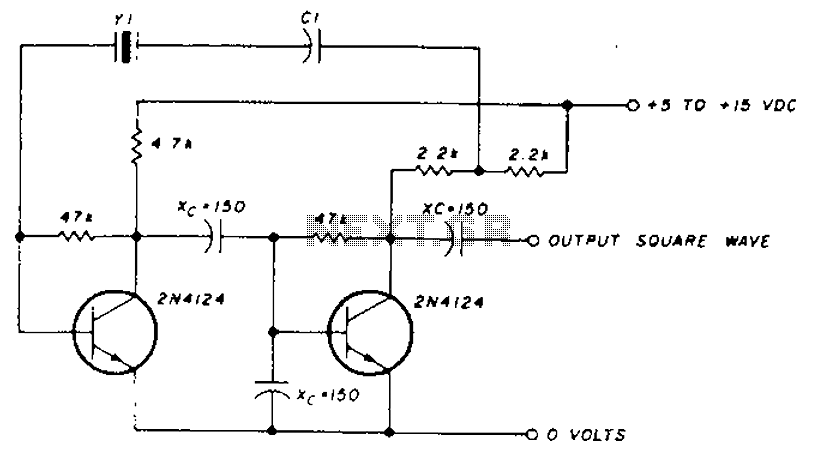
A transistor in series with capacitor C1 can be utilized to adjust the oscillator output frequency. The frequency may vary with changes in capacitance ranging from 20 pF to 0.01 µF, or as determined by the tuning capacitor. The transistor and the load capacitance should be approximately equal. The value of X is an approximation; in most circuits, the frequency can be modified.
In this circuit configuration, the transistor acts as a variable impedance component that influences the resonant frequency of the oscillator circuit. The primary function of capacitor C1 is to determine the timing characteristics of the oscillator, while the transistor allows for dynamic adjustment of the output frequency. By altering the capacitance value through C1, the resonant frequency can be finely tuned within the specified range, which is critical for applications requiring precise frequency control.
The choice of the transistor type is essential, as it must be capable of handling the required frequency range and load conditions. Commonly used transistors for such applications include bipolar junction transistors (BJTs) or field-effect transistors (FETs), depending on the desired characteristics of the oscillator circuit. The transistor's biasing must be carefully designed to ensure optimal operation within the desired frequency range while minimizing distortion and maintaining stability.
The relationship between the transistor, load capacitance, and C1 is vital for achieving the desired oscillator performance. When the load capacitance is approximately equal to the capacitance of C1, the circuit can achieve better resonance, leading to a more stable output frequency. The approximation of value X indicates that while a theoretical value can be calculated, real-world variations in component values and operating conditions may lead to deviations from this approximation.
Overall, the described oscillator circuit is a versatile design that can be employed in various applications, such as signal generation, frequency modulation, and timing circuits, where precise frequency adjustment is necessary. Proper component selection and circuit design are crucial for achieving the desired performance characteristics.And a transistor in series with C1 can be used to adjust the oscillator output frequency. Frequency may be in the range of 20pF to 0.01 F change, or as the tuning capacitor, th e transistor and the load capacitance approximately equal. The value of X is an approximation, for most circuits and frequency can be changed.
In this circuit configuration, the transistor acts as a variable impedance component that influences the resonant frequency of the oscillator circuit. The primary function of capacitor C1 is to determine the timing characteristics of the oscillator, while the transistor allows for dynamic adjustment of the output frequency. By altering the capacitance value through C1, the resonant frequency can be finely tuned within the specified range, which is critical for applications requiring precise frequency control.
The choice of the transistor type is essential, as it must be capable of handling the required frequency range and load conditions. Commonly used transistors for such applications include bipolar junction transistors (BJTs) or field-effect transistors (FETs), depending on the desired characteristics of the oscillator circuit. The transistor's biasing must be carefully designed to ensure optimal operation within the desired frequency range while minimizing distortion and maintaining stability.
The relationship between the transistor, load capacitance, and C1 is vital for achieving the desired oscillator performance. When the load capacitance is approximately equal to the capacitance of C1, the circuit can achieve better resonance, leading to a more stable output frequency. The approximation of value X indicates that while a theoretical value can be calculated, real-world variations in component values and operating conditions may lead to deviations from this approximation.
Overall, the described oscillator circuit is a versatile design that can be employed in various applications, such as signal generation, frequency modulation, and timing circuits, where precise frequency adjustment is necessary. Proper component selection and circuit design are crucial for achieving the desired performance characteristics.And a transistor in series with C1 can be used to adjust the oscillator output frequency. Frequency may be in the range of 20pF to 0.01 F change, or as the tuning capacitor, th e transistor and the load capacitance approximately equal. The value of X is an approximation, for most circuits and frequency can be changed.
